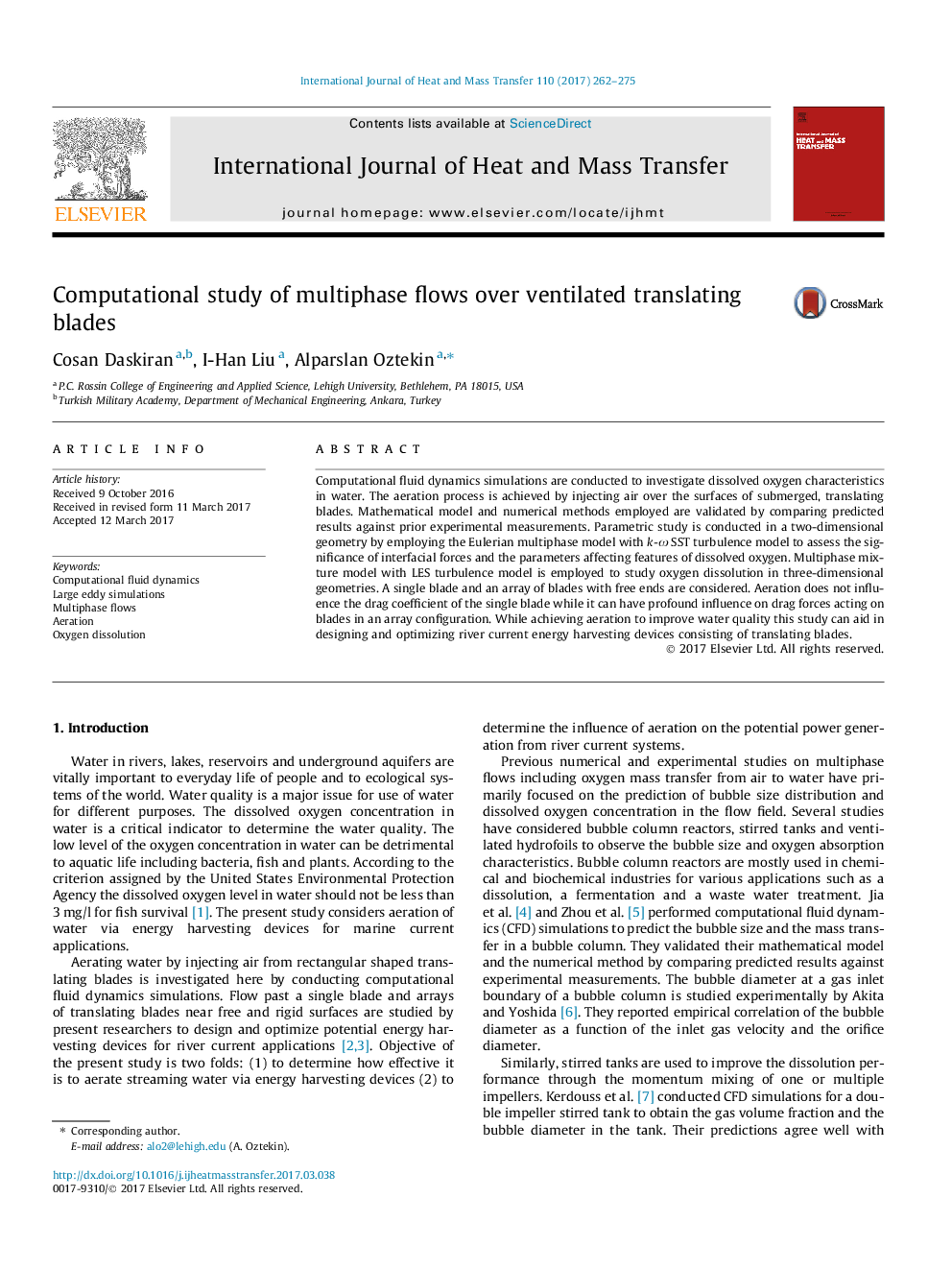| Article ID | Journal | Published Year | Pages | File Type |
|---|---|---|---|---|
| 4993566 | International Journal of Heat and Mass Transfer | 2017 | 14 Pages |
Abstract
Computational fluid dynamics simulations are conducted to investigate dissolved oxygen characteristics in water. The aeration process is achieved by injecting air over the surfaces of submerged, translating blades. Mathematical model and numerical methods employed are validated by comparing predicted results against prior experimental measurements. Parametric study is conducted in a two-dimensional geometry by employing the Eulerian multiphase model with k-Ï SST turbulence model to assess the significance of interfacial forces and the parameters affecting features of dissolved oxygen. Multiphase mixture model with LES turbulence model is employed to study oxygen dissolution in three-dimensional geometries. A single blade and an array of blades with free ends are considered. Aeration does not influence the drag coefficient of the single blade while it can have profound influence on drag forces acting on blades in an array configuration. While achieving aeration to improve water quality this study can aid in designing and optimizing river current energy harvesting devices consisting of translating blades.
Keywords
Related Topics
Physical Sciences and Engineering
Chemical Engineering
Fluid Flow and Transfer Processes
Authors
Cosan Daskiran, I-Han Liu, Alparslan Oztekin,
